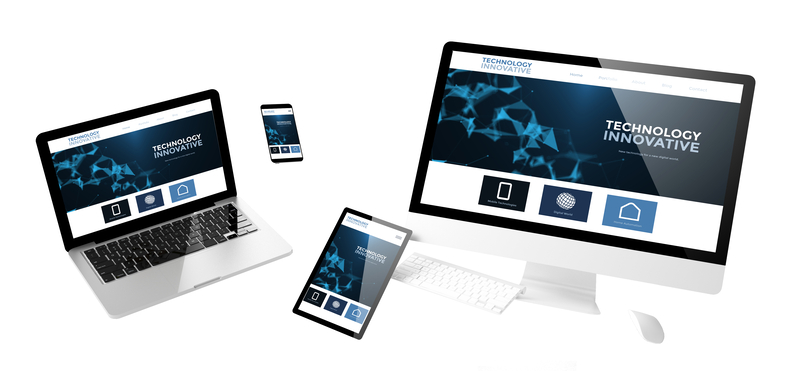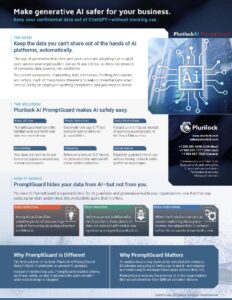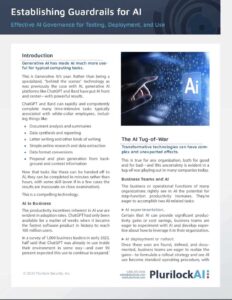Deep Dive into Bring Your Own Device (BYOD) in Cybersecurity
In today’s digital age, the concept of Bring Your Own Device (BYOD) has become increasingly prevalent in the corporate world. It refers to a policy where employees are allowed or even encouraged to use their personal devices, such as smartphones, tablets, and laptops, for work-related tasks. While BYOD offers numerous benefits in terms of flexibility and productivity, it also poses significant cybersecurity challenges. This deep dive explores what BYOD is, why it matters, and delves into an in-depth analysis of its importance in the realm of cybersecurity.
What is BYOD?
BYOD, an acronym for Bring Your Own Device, is a workplace policy that permits employees to use their personal devices for business-related tasks. These devices can include smartphones, tablets, laptops, and even wearables like smartwatches. The underlying principle is to provide employees with the flexibility to work from their preferred devices, which they are typically more comfortable and proficient with, while potentially reducing the organization’s hardware costs.
The key components of a BYOD policy typically include:
- Device Diversity: BYOD encompasses a wide variety of devices, each with its own operating system, applications, and security settings. This diversity can pose challenges in managing and securing the corporate network.
- Access Control: To ensure secure access to corporate resources, BYOD policies often involve the implementation of access controls and authentication mechanisms.
- Security Measures: Organizations usually require employees to comply with certain security measures, such as installing antivirus software, enabling encryption, and regularly updating their devices.
- Data Protection: BYOD policies must address data protection issues, including data storage, sharing, and backup. The organization needs to safeguard sensitive information from unauthorized access or leaks.
- Employee Privacy: Balancing security with employee privacy is a crucial aspect of BYOD. Employees may be apprehensive about the organization’s ability to monitor their personal devices.
Why BYOD Matters
BYOD has gained traction for several compelling reasons, but it also presents several challenges, making it a topic of considerable importance in the field of cybersecurity.
Benefits of BYOD
- Enhanced Productivity: BYOD allows employees to work from anywhere, at any time, using their preferred devices. This flexibility can significantly enhance productivity by eliminating the constraints of fixed office hours and locations.
- Cost Savings: Organizations can reduce their hardware expenditures by relying on employees’ personal devices. This can result in substantial cost savings, especially for small and medium-sized businesses.
- Employee Satisfaction: Allowing employees to use their devices can improve job satisfaction and work-life balance, contributing to higher morale and retention rates.
- Competitive Advantage: Companies that embrace BYOD may gain a competitive advantage by attracting tech-savvy talent who prefer working in environments that support their personal devices.
Challenges and Risks of BYOD
- Security Risks: BYOD introduces a myriad of security risks. Personal devices may not have the same level of security as corporate-owned ones, making them susceptible to malware, data breaches, and other cyber threats.
- Data Leakage: Employees may inadvertently or intentionally leak sensitive company data from their personal devices, jeopardizing confidentiality and compliance.
- Compliance Issues: Meeting regulatory compliance requirements, such as GDPR or HIPAA, becomes more complex when personal devices are involved, as organizations must ensure data protection and privacy measures extend to these devices.
- Device Management: Managing a diverse set of devices with varying operating systems and configurations can be challenging for IT departments. Ensuring these devices are up-to-date and secure can be resource-intensive.
- Employee Privacy Concerns: Employees may have concerns about their personal data and privacy when using personal devices for work. Striking a balance between monitoring for security and respecting employee privacy can be delicate.
The Importance of BYOD in Cybersecurity
The intersection of BYOD and cybersecurity is where the true significance of this policy emerges. To understand its importance, we must delve into several key aspects.
1. Expanding Attack Surface
BYOD inevitably expands the attack surface for cybercriminals. When employees use a diverse range of personal devices to access company resources, it creates multiple entry points for potential threats. Each device represents a potential vulnerability that cybercriminals can exploit.
Moreover, personal devices often traverse various networks and connect to public Wi-Fi hotspots, which are typically less secure than corporate networks. This makes these devices more susceptible to attacks, such as man-in-the-middle attacks or eavesdropping, putting sensitive corporate data at risk.
2. Endpoint Security
Securing endpoints, which are the devices used to access corporate networks and data, becomes paramount in a BYOD environment. Cybersecurity measures must be extended to these devices to ensure they are adequately protected. This includes implementing antivirus software, firewalls, and encryption, as well as keeping the devices up to date with security patches.
Furthermore, endpoint security solutions should offer remote wipe capabilities. In the event that a device is lost or stolen, IT administrators should have the ability to remotely erase corporate data to prevent unauthorized access.
3. Data Protection
One of the primary concerns in BYOD is data protection. Sensitive company information may be stored on personal devices, and there is a risk that this data could be compromised. Thus, organizations need robust data protection strategies, including encryption, data classification, and access controls.
In the event of a security incident, it is crucial to have the capability to remotely erase corporate data from the device while leaving the employee’s personal data intact. This requires careful planning and the right technology solutions.
4. User Education and Awareness
In a BYOD environment, employees play a pivotal role in cybersecurity. They need to be educated and aware of the risks associated with using their personal devices for work. Training programs should cover topics such as identifying phishing emails, securing their devices, and recognizing suspicious activities.
Additionally, employees should be encouraged to report any security incidents promptly. They are often the first line of defense against cyber threats, and their vigilance can be instrumental in mitigating risks.
5. Access Control and Authentication
Implementing strong access control and authentication mechanisms is essential in a BYOD environment. Multi-factor authentication (MFA) should be enforced to ensure that only authorized individuals gain access to corporate resources. This helps prevent unauthorized access, even if a device is lost or stolen.
Furthermore, device enrollment and registration processes should be rigorous, ensuring that only trusted devices are allowed on the corporate network. The use of mobile device management (MDM) solutions can aid in enforcing these policies.
6. Regulatory Compliance
Compliance with industry-specific regulations and data protection laws is a critical consideration for organizations that implement BYOD. Failing to meet these requirements can result in severe penalties and damage to the company’s reputation.
Organizations must ensure that their BYOD policies and security measures align with the relevant regulatory frameworks. This may involve implementing strict data encryption, access controls, and data retention policies to protect sensitive information.
7. Risk Assessment and Management
BYOD introduces new risks, and organizations must conduct thorough risk assessments to identify potential vulnerabilities and threats associated with personal device use. A risk management strategy should then be developed to mitigate these risks effectively.
This strategy may include measures such as regular security audits, vulnerability assessments, and incident response plans tailored specifically for BYOD scenarios. Continual monitoring and adaptation of security measures are essential to stay ahead of evolving threats.
8. Employee Privacy
Respecting employee privacy while maintaining a high level of cybersecurity is a delicate balance. Employees may have concerns about their personal data being accessed or monitored by their employers. To address this, organizations should clearly define the boundaries of what can and cannot be monitored on personal devices.
Transparency is key in maintaining employee trust. Employers should communicate their BYOD policies clearly, including the extent to which personal devices will be monitored and the reasons behind these measures.
9. Mobile Device Management (MDM) and Mobile Application Management (MAM)
Mobile Device Management (MDM) and Mobile Application Management (MAM) solutions play a crucial role in BYOD security. MDM enables organizations to remotely manage and secure devices, enforce security policies, and perform actions like remote wipes in case of device loss or theft.
MAM, on the other hand, allows organizations to control and secure the corporate applications and data on the device without affecting the personal data and applications of the employee. It ensures that sensitive corporate data is isolated and protected.
10. Continuous Monitoring and Incident Response
BYOD security is not a one-time effort; it requires continuous monitoring and a well-defined incident response plan. Organizations should proactively monitor device activities, network traffic, and user behavior to detect anomalies and potential threats.
In the event of a security incident, a well-prepared incident response plan is critical to contain the threat, investigate the breach, and mitigate the damage. This plan should be regularly tested and updated to address evolving threats.
Conclusion
Bring Your Own Device (BYOD) is a transformative policy that offers numerous benefits in terms of flexibility, productivity, and cost savings. However, it also presents significant challenges and risks, particularly in the realm of cybersecurity. The importance of BYOD in cybersecurity cannot be overstated, as it expands the attack surface, requires robust endpoint security, demands data protection measures, relies on user education, and necessitates strong access control and authentication.
To successfully navigate the intersection of BYOD and cybersecurity, organizations must strike a delicate balance between enabling employee flexibility and maintaining a high level of security. This involves comprehensive risk assessments, continuous monitoring, adherence to regulatory compliance, and transparent communication with employees about privacy concerns. Implementing Mobile Device Management (MDM) and Mobile Application Management (MAM) solutions can also aid in achieving these goals.
In a digital landscape characterized by rapid technological advancements and evolving cyber threats, organizations that effectively address the challenges and risks of BYOD will be better equipped to reap the rewards of enhanced productivity and competitiveness while safeguarding their sensitive data and reputations. As BYOD continues to evolve, staying ahead of cybersecurity threats will remain a top priority for businesses seeking to thrive in the digital age.
















